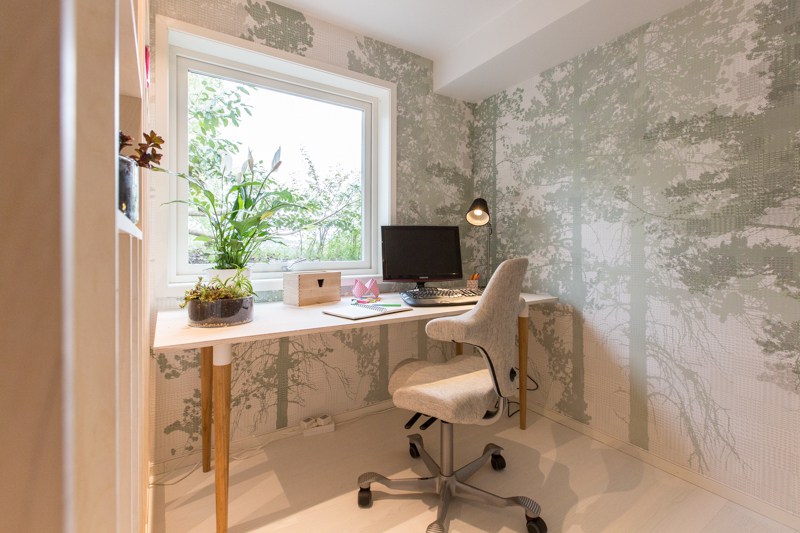The Biophilic Office
The World Health Organisation expects stress-related illnesses such as mental health disorders and cardio-vascular disease to be the two largest contributors to disease by 2020. As 90% of people's lives is spent in buildings, this means the built environment can play a significant part in preventing ill health and promoting a positive approach to health and wellbeing.
Biophilia (meaning a love of nature) focuses on a human’s innate attraction to nature and natural processes. American biologist and researcher Edward O. Wilson introduced and popularised this hypothesis in his book, 'Biophilia' (1984) defining this as 'the urge to affiliate with other forms of life'.
Biophilic design uses these ideas as principles to create a human-centred approach that when applied improves many of the spaces that are lived and worked in today, with numerous benefits to health and wellbeing.
Incorporating direct or indirect elements of nature into the built environment have been demonstrated to reduce stress, blood pressure levels and heart rates, whilst increasing productivity, creativity and self-reported rates of wellbeing.
In May 2017, BRE announced that they are working closely with architect and interior designer Oliver Heath on a project to evaluate the value of biophilic design to the workplace environment. The project consists of a plan to take a tired and aging 1980s office building on the BRE campus and refurbish it according to biophilic design principles.
The project is named The Biophilic Office and will show how quantified improvements in productivity and wellness can bring rewards for landlords, occupiers, developers and all those concerned with the office environment.
Researchers will carry out a year of pre-refurbishment and a year of post-refurbishment monitoring, evaluating the office environment for daylight, lighting, indoor air quality, acoustic, thermal and humidity comfort. Office occupants will undergo a confidential health evaluation, sign up to a series of online questionnaires and surveys and receive wearable technology to monitor key health metrics.
A design strategy will be developed including tiers of interventions in zones within the office. The products used will undergo laboratory evaluation to establish whether a health and wellbeing potential can be quantified at products level.
This article was originally published here on 9 May 2017 by BRE Buzz. It was written by Simon Guy.
--BRE Buzz
[edit] Related articles on Designing Buildings Wiki
- All about wellness.
- BRE Buzz articles on Designing Buildings Wiki.
- Biophilia and building design.
- Biophilic design.
- Biophilic design and sustainability.
- Biophilic design research.
- Biophilic design - why it matters.
- Biophilic gym.
- Building related illness.
- Green infrastructure.
- Health and productivity in sustainable buildings.
- Temple Farm Development.
- Wellbeing.
- Wellbeing and creativity in workplace design - case studies.
- What we know about wellbeing.
- White Collar Factory.
- Wood and healthy office spaces.
Featured articles and news
From studies, to books to a new project, with founder Emma Walshaw.
Types of drawings for building design
Still one of the most popular articles the A-Z of drawings.
Who, or What Does the Building Safety Act Apply To?
From compliance to competence in brief.
The remarkable story of a Highland architect.
Commissioning Responsibilities Framework BG 88/2025
BSRIA guidance on establishing clear roles and responsibilities for commissioning tasks.
An architectural movement to love or hate.
Don’t take British stone for granted
It won’t survive on supplying the heritage sector alone.
The Constructing Excellence Value Toolkit
Driving value-based decision making in construction.
Meet CIOB event in Northern Ireland
Inspiring the next generation of construction talent.
Reasons for using MVHR systems
6 reasons for a whole-house approach to ventilation.
Supplementary Planning Documents, a reminder
As used by the City of London to introduce a Retrofit first policy.
The what, how, why and when of deposit return schemes
Circular economy steps for plastic bottles and cans in England and Northern Ireland draws.
Join forces and share Building Safety knowledge in 2025
Why and how to contribute to the Building Safety Wiki.
Reporting on Payment Practices and Performance Regs
Approved amendment coming into effect 1 March 2025.
A new CIOB TIS on discharging CDM 2015 duties
Practical steps that can be undertaken in the Management of Contractors to discharge the relevant CDM 2015 duties.
Planning for homes by transport hubs
Next steps for infrastructure following the updated NPPF.

























Comments